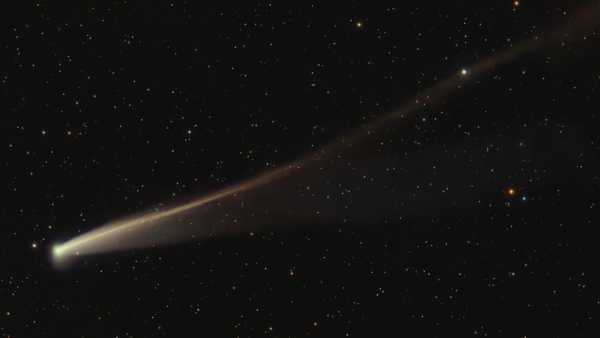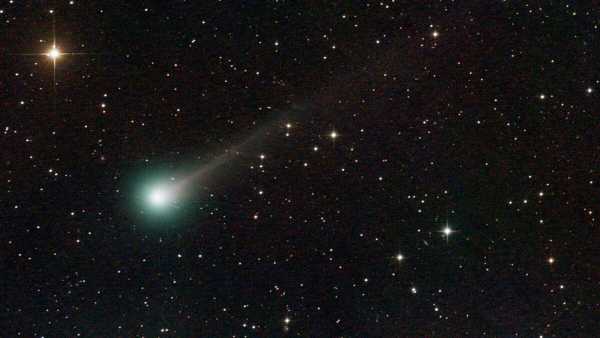
Recent photographs of Comet Lemmon show it glowing with a rare greenish tint, likely caused by a certain chemical in its gaseous coma. (Photo: Dimitrios Katevainis, CC BY-SA 4.0)
A newly discovered comet, dubbed “Lemmon,” is poised for a close flyby of Earth later this month and may even be visible to the naked eye, some researchers claim. However, Lemmon may end up looking more like a different citrus fruit, thanks to its lime-green glow.
Comet C/2025 A6 (Lemmon) is a non-periodic comet, meaning its orbital period varies over a millennium and is difficult to predict. Observations indicate that the comet currently orbits the Sun every 1,350 years, spending most of that time in the Oort Cloud—a giant shell of comets and other icy objects at the very edge of the solar system.
You may like
-
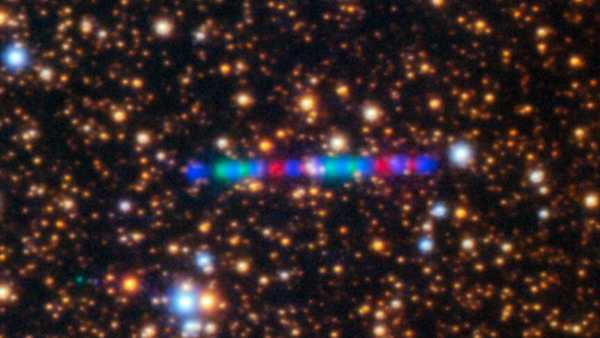
Interstellar Comet 3I/ATLAS Transforms into a Giant “Cosmic Rainbow” in a New, Stunning Telescope Image
-
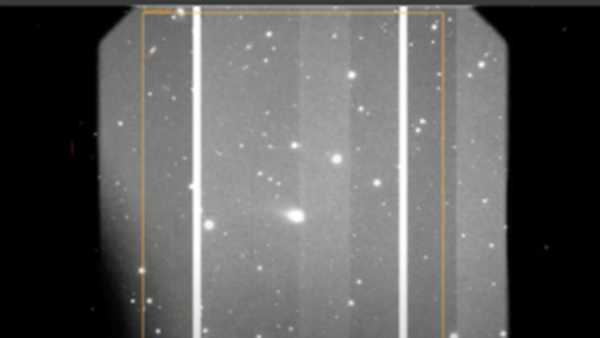
I watched scientists observe the interstellar comet 3I/ATLAS in real time. This is what they saw.
-
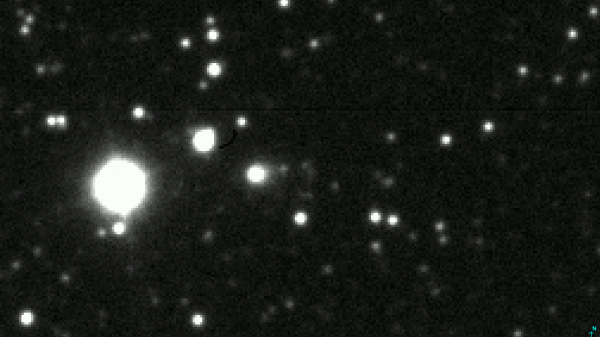
The “interstellar visitor” 3I/ATLAS may be the oldest comet ever observed—and it could develop a spectacular tail this year.
Lemmon will make its closest approach to Earth on October 21, coming within 90 million kilometers of our planet—more than 230 times farther than the Moon. A few weeks later, on November 8, it will reach its closest approach to the Sun, or perihelion, before beginning its long journey back to the outer Solar System.
As the comet approaches the Sun, it will become brighter as the surrounding cloud of gas, ice, and dust, known as the coma, expands, allowing it to reflect more sunlight back to Earth. Its peak brightness, or apparent magnitude, is expected to be around 5, making it slightly fainter than can be seen with the naked eye.
However, some experts predict that Comet Lemmon could reach apparent magnitude 4—bright enough to be seen without specialized stargazing equipment, according to Live Science sister site Space.com. (Apparent magnitude is measured on an inverse-logarithmic scale, meaning lower numbers represent greater brightness.)
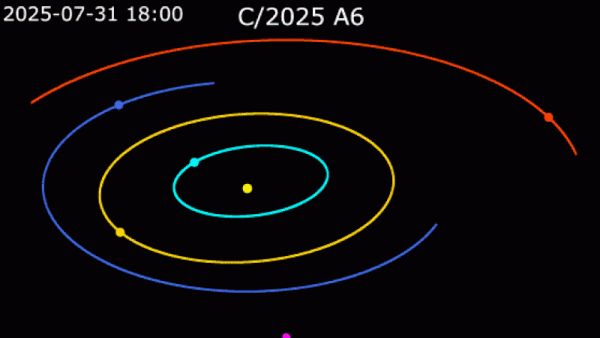
Comet Lemmon will orbit the Sun in November before beginning its long journey back to the outer solar system.
Numerous photographs of the comet show it emitting a ghostly emerald glow. This is likely caused by the presence of diatomic carbon, or dicarbon, in its coma—a rare gaseous form of carbon in which pairs of the element's atoms are bonded together. In recent years, we have observed several other green comets, including the aptly named “green comet” C/2022 E3, which passed by us in 2023, and the “devil comet” 12P/Pons-Brooks, which turned green as it passed the Sun in 2024. Recent photographs indicate that 3I/ATLAS may also be turning green.
Comet Lemmon also has a spectacular tail, first appearing in late August and composed of ice, gas, and dust blown away by solar radiation. In late September, this tail was hit by a strong gust of solar wind, causing the glowing tail to shimmer in space (see below).
Researchers believe that Lemmon's upcoming flyby of the Sun could dramatically alter its future trajectory around the Sun.
Although Comet Lemmon will approach our star at only 77 million kilometers (48 million miles)—roughly half the distance between Earth and the Sun—experts believe its orbital period could be shortened by 200 years. This is likely due to a recent close flyby of Jupiter, whose gravitational field deflected the comet from its original path, Space.com reports.
You may like
-
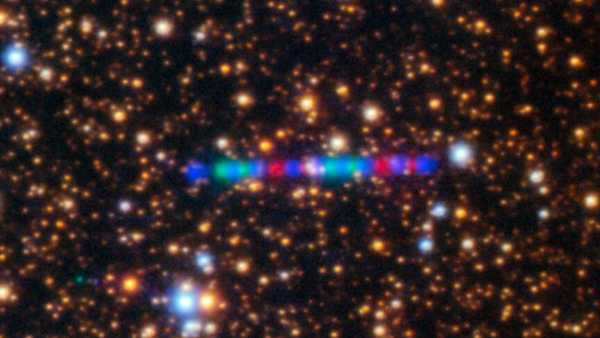
Interstellar Comet 3I/ATLAS Transforms into a Giant “Cosmic Rainbow” in a New, Stunning Telescope Image
-
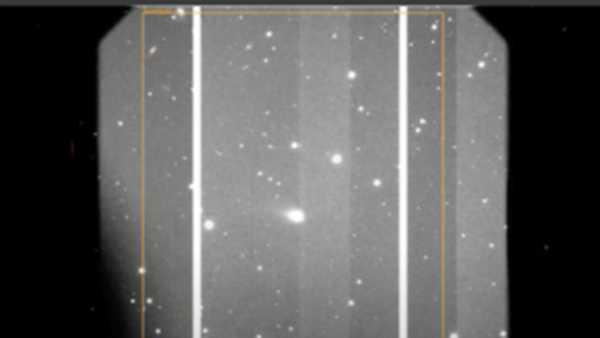
I watched scientists observe the interstellar comet 3I/ATLAS in real time. This is what they saw.
-
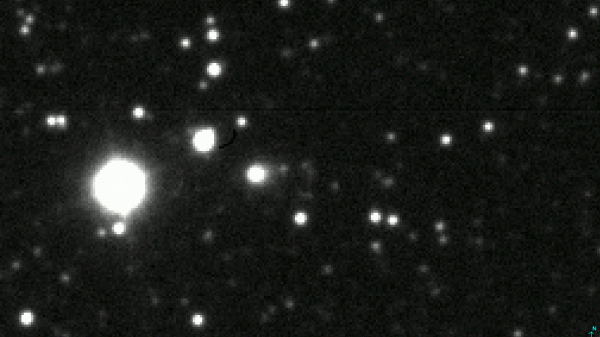
The “interstellar visitor” 3I/ATLAS may be the oldest comet ever observed—and it could develop a spectacular tail this year.
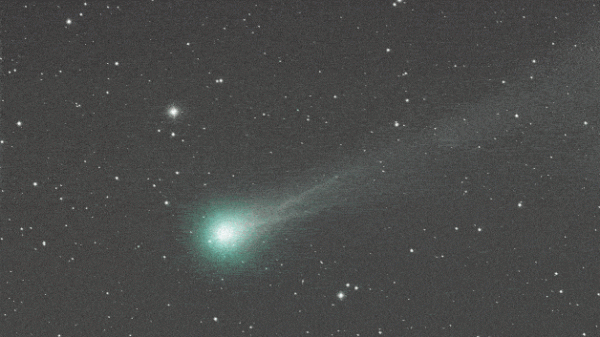
On September 23, Comet Lemmon's impressive tail was swept by a powerful gust of solar wind. This 69-minute timelapse shows the tail rippling through space as the comet was photographed by several Starlink satellites. How to see Comet Lemmon
Comet Lemmon is already visible with most stargazing instruments, but it will become easier to spot in the coming weeks as it brightens. It may become visible to the naked eye, but even if not, it should still be easy to spot with a good home telescope or stargazing binoculars.
“This comet is developing very well and is already a spectacular object, well-positioned for observation in the morning sky,” Nick James, director of the British Astronomical Association's Comet Section, recently told Spaceweather.com. “It's definitely worth getting up for!”
RELATED STORIES
— New photographs of the interstellar comet 3I/ATLAS show how its tail is growing before our eyes.
— The mysterious city-sized comet Centaur has become 300 times brighter after a quadruple eruption from a cold volcano.
— An astronaut from the ISS captured an “absolutely stunning” image of Comet C/2024 G3 ATLAS flying past Earth.
The comet will be visible in the constellation Lynx, between Jupiter and the stars of the Big Dipper, and will reach its brightest in mid-October, according to BBC Sky at Night magazine. For most Northern Hemisphere residents, Comet Lemmon will be easiest to observe just before sunrise or shortly after sunset.
More up-to-date information on where to see the comet, tied to a specific location, can be found in online databases such as TheSkyLive.com.
Depending on when and where in the world you search, you may also spot comets SWAN R2 and 3I/ATLAS at the same time.

Harry Baker, Social Link Navigation, Senior Staff Writer
Harry is a senior writer for Live Science based in the UK. Before becoming a journalist, he studied marine biology at the University of Exeter. He covers a wide range of topics, including space exploration, planetary science, space weather, climate change, animal behavior, and paleontology. His recent work on solar maximum won the 2024 Aerospace Media Awards in the Best Space Story category and was shortlisted for the 2023 NCTJ Awards for Excellence in the Breaking News category. He also writes Live Science's weekly series, “Earth from Space.”
You must verify your public display name before commenting.
Please log out and log back in. You will then be asked to enter a display name.
Exit Read more
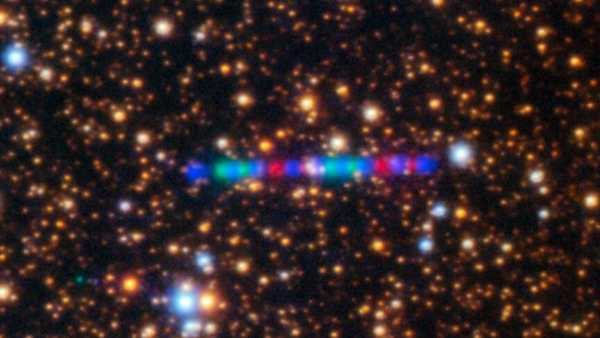
Interstellar Comet 3I/ATLAS Transforms into a Giant “Cosmic Rainbow” in a New, Stunning Telescope Image
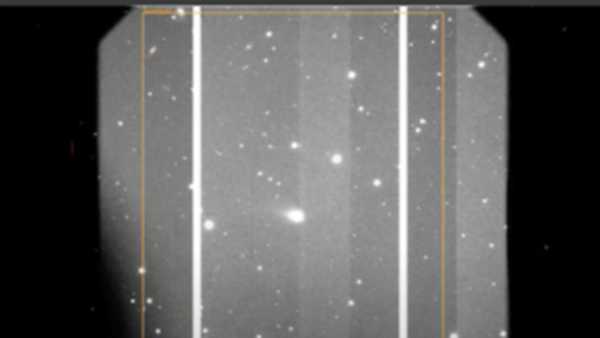
I watched scientists observe the interstellar comet 3I/ATLAS in real time. This is what they saw.
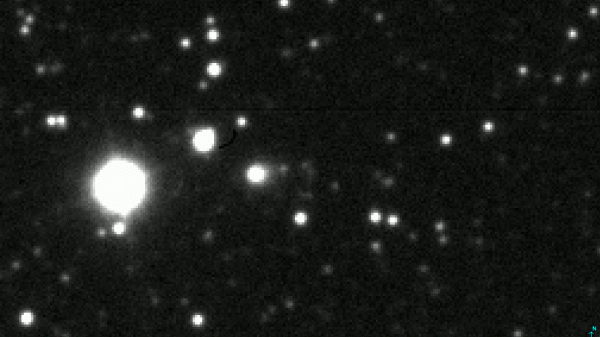
The “interstellar visitor” 3I/ATLAS may be the oldest comet ever observed—and it could develop a spectacular tail this year.
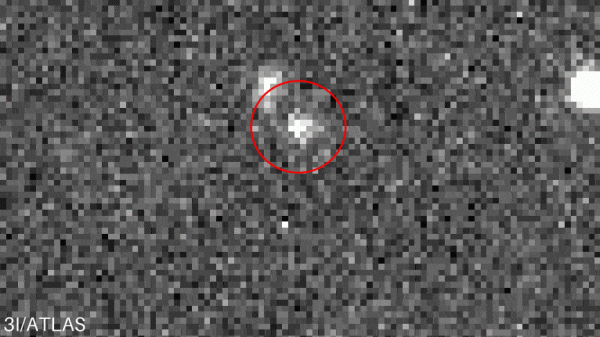
Astronomers are rushing to study our Solar System's newest “interstellar visitor.” Here's why.
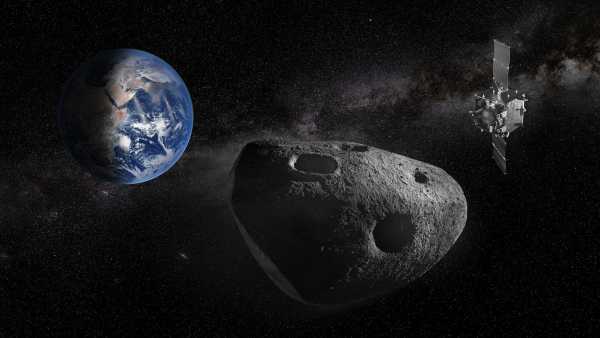
The Apophis flyby will be a “once-in-a-millennium” opportunity for skywatchers and scientists.

NASA's first observations have shown that Comet 3I/ATLAS is unusually “active.”
Latest news about comets
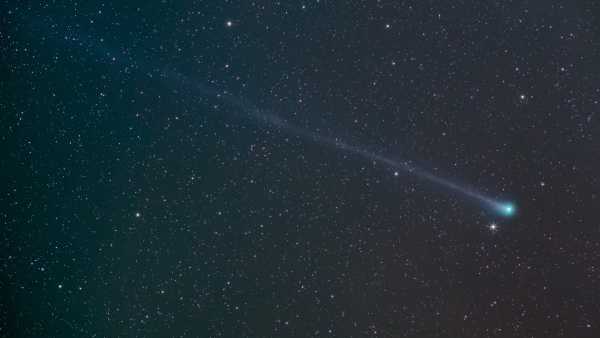
Watch the sky! This October, you'll be able to see two bright comets on the same night during a meteor shower.
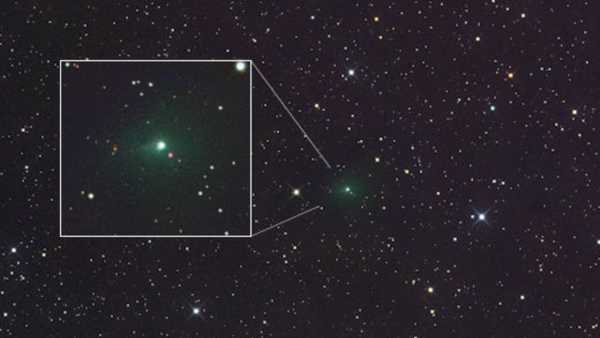
Stunning new photos show interstellar comet 3I/ATLAS may be turning bright green

New photographs of comet 3I/ATLAS show its tail growing before our eyes.
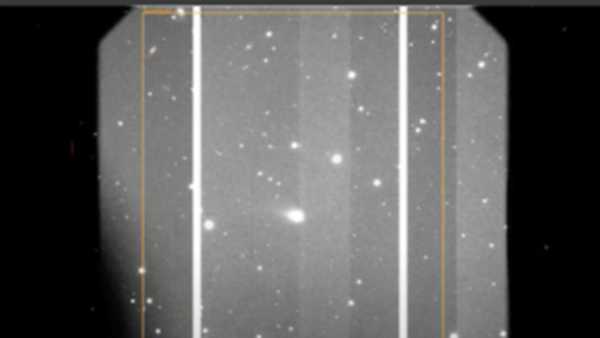
I watched scientists observe the interstellar comet 3I/ATLAS in real time. This is what they saw.

Images from the James Webb Space Telescope show something strange is happening with the interstellar comet 3I/ATLAS.

NASA's Hubble Space Telescope has released the most detailed images to date of the interstellar visitor 3I/ATLAS.
Latest news

Jane Goodall, the renowned primatologist who discovered chimpanzee tool use, has died at age 91.

New research has shown that the Bering Land Bridge formed much later than we thought.

Scientists created human eggs from skin cells and then used them to create embryos.

The Panama Canal requires a colossal amount of water to operate. A study warns that climate change could threaten this.

Yosemite's glaciers have survived for 20,000 years, but we may be the first people to see the Sierra Nevada ice-free.

Years of repeated blows to the head increase the risk of CTE—even if they aren't concussions.
LATEST ARTICLES

14 Reasons You Keep Forgetting Your Fitness Trackers (And How to Prevent It From Happening Again)
Live Science magazine is part of Future US Inc., an international media group and leading digital publisher. Visit our corporate website.
- About Us
- Contact Future experts
- Terms and Conditions
- Privacy Policy
- Cookie Policy
- Accessibility Statement
- Advertise with us
- Web notifications
- Career
- Editorial standards
- How to present history to us
© Future US, Inc. Full 7th Floor, 130 West 42nd Street, New York, NY 10036.
var dfp_config = { “site_platform”: “vanilla”, “keywords”: “type-news-daily,serversidehawk,videoarticle,van-enable-adviser-
Sourse: www.livescience.com



